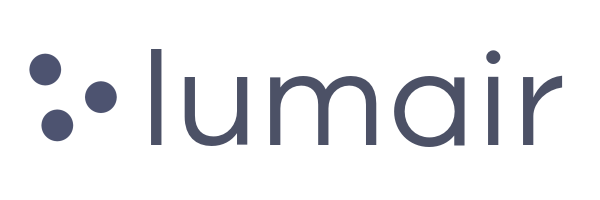Choosing the right psychologist practice management software is crucial for practice efficiency and client care. A well-chosen system consolidates scheduling, documentation, billing, telehealth, and compliance into a single workflow, reducing manual tasks and errors while enabling clinicians to focus more on clients. By aligning software with clinical routines and regulatory requirements, practices can shorten administrative cycles, improve data accuracy, and support timely, high-quality care.
A robust solution also strengthens client engagement through streamlined intake, secure communications, and transparent billing. When software scales with growth and adapts to evolving guidelines, it becomes a strategic asset rather than a compliance burden. This guide outlines the key features, implementation considerations, costs and ROI, integrations, security and compliance needs, user experience, evaluation methods, and practical steps to select and deploy psychologist practice management software effectively.
Key features to look for

- Scheduling and waitlist management with calendar synchronization, automated reminders, and block scheduling for sessions, assessments, and supervision.
- Clinical documentation with adaptable note templates (e.g., SOAP notes), secure storage, version history, and searchability; support for psychotherapy notes and separate documentation where appropriate.
- Billing and claims management, including CPT/ICD-10 coding guidance, payer rule logic, electronic claim submission, real-time eligibility checks, and denials management.
- Telehealth integration that is fully HIPAA-compliant, with scheduling, secure video, and intuitive access for clients and clinicians.
- Intake forms, assessments, and patient portal capabilities to streamline onboarding and ongoing communication.
- Secure messaging and patient communications with audit trails, message templates, and notification controls.
- Revenue cycle management and robust reporting, including dashboards for collections, aging, utilization, and treatment outcomes.
- Data governance features such as role-based access, audit logs, automated backups, data retention policies, and easy data export.
- Interoperability and integrations, including APIs for data exchange with other systems (EHRs, accounting, or analytics tools) and support for standards like FHIR where available.
- Compliance tools and documentation support, including BAAs, breach notification workflows, and configuration that supports regulatory requirements.
Implementation considerations
- Data migration and mapping: plan for transferring patient records, appointment histories, and templates; perform data cleansing to minimize junk or duplicate records.
- Workflow alignment: map current clinical and administrative processes to the software’s capabilities; identify must-have vs. nice-to-have features.
- Change management: involve clinicians in configuration, provide clear expectations, and develop a phased rollout to minimize disruption.
- Deployment timeline and downtime: establish a realistic go-live date, including cutover windows and contingency plans.
- Configuration and customization: balance standardization with the need for practice-specific templates, forms, and roles.
- Data security and access governance: define user roles, MFA requirements, and access restrictions aligned with clinical responsibilities.
- Vendor support: ensure onboarding, implementation milestones, and post-go-live support are clearly documented in the contract.
Cost factors and ROI
- Pricing models: anticipate upfront implementation fees, monthly or annual subscription costs, per-provider or per-user licenses, and any telehealth premiums.
- Hidden costs: data migration services, training, additional storage, premium support, and potential integration or API usage charges.
- ROI drivers: time savings from automated scheduling, fewer claim denials through cleaner coding, faster intake and onboarding, improved collections, and higher client engagement via a client portal.
- Financial planning: model expected gains and payback period by comparing current administrative time, error rates, and billing cycles to the post-implementation state.
Integration capabilities with existing systems
- EHR/EMR interoperability: assess whether the practice management system can exchange data with your current electronic health record or other clinical software, and whether it supports common data formats or standards.
- Accounting and payroll: consider connections to accounting platforms for two-way data on expenses, payroll, and revenue reconciliation.
- Telehealth and communication tools: determine if telehealth, secure messaging, and client portals can be unified or require separate licenses.
- Single sign-on and security: evaluate SSO options and MFA integration to streamline access while preserving security.
- Data portability: confirm that data can be exported in a usable format and that there is a clear exit plan if you switch systems.
Security and compliance requirements
- Regulatory alignment: ensure the platform supports HIPAA obligations, including privacy, security, and breach notification requirements.
- Data protection: require encryption of data at rest and in transit, robust access controls, and encryption key management.
- Auditability: maintain comprehensive audit logs that track user actions, data access, and changes to sensitive information.
- Business Associate Agreement (BAA): obtain and review a BAA that defines responsibilities for protecting PHI and handling incidents.
- Disaster recovery and backups: verify RPO/RTO targets, regular backups, and tested recovery procedures.
- Security standards: consider best-practice benchmarks (e.g., risk assessments, vulnerability scanning, incident response planning) and inquire about third-party attestations if available.
- Government resources: for guidance on HIPAA privacy and security requirements, see official sources such as the HIPAA overview and Security Rule documentation: HIPAA overview and HIPAA Security Rule for professionals. For general privacy-security guidance in health IT, see Health IT Privacy & Security.
User experience and training needs
- Usability and clinician fit: prioritize an intuitive interface, fast note-taking, and templates that reflect real-world workflows.
- Mobile access and client portal: ensure reliable mobile support for clinicians and convenient, secure client interactions.
- Training and onboarding: require comprehensive onboarding, role-based training, and ongoing educational resources (videos, guides, help center).
- Change management: set realistic adoption targets, designate a super-user in the practice, and monitor usage to identify gaps.
- Documentation quality: demand clear in-system help, auditable notes, and easy access to policy and procedure materials.
How to evaluate different options
- Define requirements: list must-have features, compliance needs, and integration requirements based on clinical workflows.
- RFP and demos: request structured demonstrations focused on your scenarios; prepare standardized evaluation criteria and scoring rubrics.
- Security and compliance questionnaire: review BAAs, data handling, incident response plans, and uptime guarantees.
- References and pilots: contact references with similar practice profiles; run a controlled pilot to observe real-world performance.
- Data strategy: confirm data ownership, export options, and timeline for a clean handoff if you switch systems.
- Cost scenario planning: model total cost of ownership over 3–5 years, including renewals, add-ons, and migrations.
Practical tips for making the selection process and successful implementation
- Assemble a cross-disciplinary selection team including clinicians, front-d desk staff, billing personnel, and IT/security lead.
- Document current pain points and desired outcomes with measurable goals (cycle time reductions, denials decrease, patient portal usage rate).
- Outline a phased implementation with a pilot period, enabling you to validate features before full deployment.
- Negotiate a clear BAAs, data ownership terms, and an exit strategy; insist on data portability and a working migration plan.
- Budget for training and ongoing support; schedule regular refresher sessions and establish a go-to resource library for staff.
- Define success metrics before go-live (e.g., claim submission turnaround, average time per patient note, patient portal adoption).
- Plan for security readiness: enforce MFA, define access roles, and ensure regular security reviews are built into the schedule.
- Maintain vendor accountability: set service-level expectations, response times, and escalation paths in the contract.
When evaluating options, prioritize how well the software aligns with clinical workflows, regulatory requirements, and sustainable ROI rather than feature count alone. A thoughtful approach to implementation—grounded in stakeholder buy-in, detailed planning, and clear success criteria—will yield the greatest improvements in both practice efficiency and client care.
For regulatory context and practical security guidance, see official U.S. government sources on HIPAA and health IT privacy and security: HIPAA overview: HIPAA overview, HIPAA Security Rule: HIPAA Security Rule for professionals, and Health IT privacy-security guidance: Health IT Privacy & Security.

